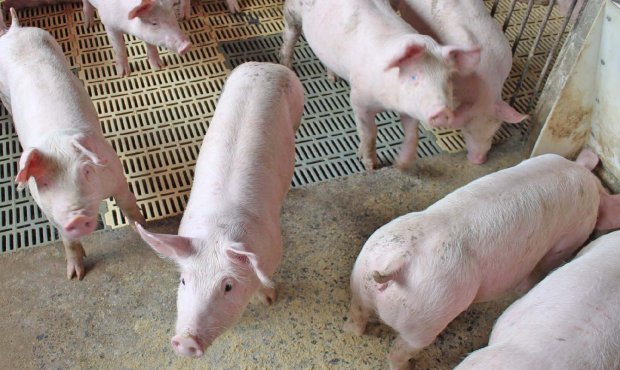Porto Alegre, July 12, 2023 – The first half of 2023 was challenging for Brazilian pig farming due to prices that did not take off along the chain as well as poor margins. On June 30, the average price of a live kilogram traded in Brazil’s Center-South was BRL 5.83, down 13% from the close of 2022, when it was at BRL 6.70. Some factors help to explain the evolution of prices, with high production and moderate demand in the domestic market.
As for production, even with the severe crisis experienced by the sector over the last few years, there were no strong measures for production adjustments. Less efficient and indebted independent farmers went bankrupt, the average weight was reduced in some periods, however, the growth of housing and births did not occur. In addition, investments made by large industries while Brazil was taking advantage of the intensification of Chinese purchases, due to African swine fever, are maturing now. In other words, such investments ended up overlapping the losses of small industries for the last 3 years.
It is worth pointing out that Brazilian exports were the great positive variable in the first half, with Brazil managing to diversify the destination of pork in the international market, offsetting the decline in Chinese purchases. Exports in the first half of 2023 must close at nearly 578.2 thousand tons, 16.1% above the 497.9 thousand tons registered in the same period last year, according to SAFRAS estimates. However, for more balanced domestic availability, exports should be greater considering the advances in production mentioned above or in case the Brazilian population consumes more pork, but it is worth noting that pork occupies the third place in the predilection of Brazilians. Chicken and beef also suffered with prices in the first half of the year due to high supply, impacting pork cuts.
For the second semester, the outlook is for a slightly more positive scenario for pig farmers and the rest of the chain, considering that the cost of animal nutrition tends to be lower and that consumption at the final tip must advance, even if not extraordinarily, but favoring meat and live animal prices. Brazilian families are indebted, and credit is expensive in Brazil, factors that affect the dynamics of local consumption. On the other hand, in the last quarter there will be the entry of salary bonuses in the economy as a positive point.
As previously described, Brazilian pork production is high, and even strong exports are unable to reduce availability to a point that allows a consistent price rebound. SAFRAS & Mercado forecasts domestic availability in 2023 at 4.054 mln tons, up 1.1% from 4.009 mln tons last year, as can be seen in the attached table.
As for the cost, corn has fallen since mid-March in Brazil, however, many pig farmers are still not enjoying a “lighter” cost structure due to the formation of expensive stocks in the first quarter, when the corn bag cost BRL 90.00 in several locations in the country, such as Santa Catarina and Rio Grande do Sul. The corn second crop is practically saved and will be huge, with good weather evolution, and the harvest should intensify soon. There are problems regarding storage in the country, which is an additional price-pressuring factor. The most concrete effect of the corn lows for independent pig farmers and industries will be seen during the last four months of this year, coinciding with the period in which pork demand will start to improve in the country, with a peak between November and December.
There is also climate progress in the United States, a variable that can affect the yield of local corn, as well as export parity in Brazil. The rains returned to the US Midwest in the first half of July and must mitigate the crop conditions that had been impacted by lack of moisture. Besides, on the 30th, the US Department of Agriculture (USDA) increased the area planted with corn in the country to 94.1 mln acres, well above market expectations (91.8 mln acres). USDA may lower the yield number in the July 12 report, but even so corn production will remain high in the United States, maintaining the bad scenario for prices. In any case, the progress of the US climate and crops needs to be closely monitored.
Another variable that can affect costs is the exchange rate. The dollar affects the export parity of both corn and soybeans. So far, the dollar has fallen against the real, ranging between BRL 4.80/4.90, reflecting the high real interest rates in Brazil, which attracts foreign capital. The market expects the Selic rate, currently at 13.25% a year, to start falling from August. If mature economies keep raising interest rates and Brazil keeps reducing them, there may be a devaluation of the real.
It is worth pointing out that the process of appreciation of the real is beneficial for costs, but makes pork less attractive in the international market. The Chinese currency, the yuan, is devaluing at the moment and could reach the highest level in recent years, at around 7.30 per dollar, so its imports become more expensive. Devalued yuan and strong real are bad for negotiations with China, not forgetting that the prices of the pork chain in the Asian country are still deteriorating. That is, the pace of pork shipments to China is not promising in this second half of the year, either in terms of volume or revenue. The positive point is that Brazil is managing to access more markets for pork this year and can compensate for the slowdown in Chinese purchases, as previously mentioned.
Follow the Safras Agency on our website. Also follow us on our Instagram and Twitter and stay on top of the main agribusiness news!
Copyright 2023 – Grupo CMA

